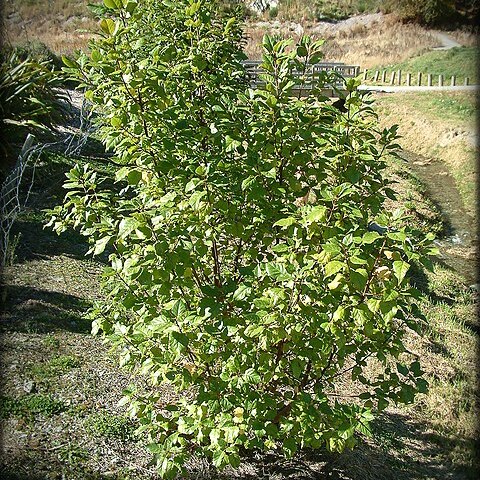Dioec. tree up to c. 10 m. tall; trunk c. 3 dm. diam., bark of branchlets rather light to dark red, pubescent. Lvs opp. to subopp., on slender pubescent petioles up to ± 5 cm. long. Lamina 5-12 × 4-8 cm., glabrate (pubescence long-persistent on veins below) broad-ovate, acuminate, membr.; deeply, doubly, irregularly, sharply serrate; light or dark green above, paler green or purplish below. Infl. paniculate, 6-10 cm. long; fls ∞, 4-6 mm. diam., on slender pubescent pedicels ± 5-10 mm. long. Sepals 4, ovate, ± 3 mm. long, pubescent; petals 4, 3-lobed, often deeply, c. 9 mm. long. Stamens ∞, on glandular disk, minutely pubescent. Ovary 3-4-celled, styles 3-4. Berry ± 5 × 4 mm. or sts larger, brighter or dark red or almost black. Seeds ± 8, angled.
More
An evergreen tree. It grows to about 10 m high. The trunk can be 30 cm across. The young bark is reddish. It can lose its leaves in cold places. The leaves are thin and let light through. They are pale green in colour. The leaves are pointed and with teeth along the edge. Male and female flowers occur on separate trees. The flowers grow in clusters. They can be pale pink or red. The fruit are 5 mm long. They are red when mature and black when fully ripe.

